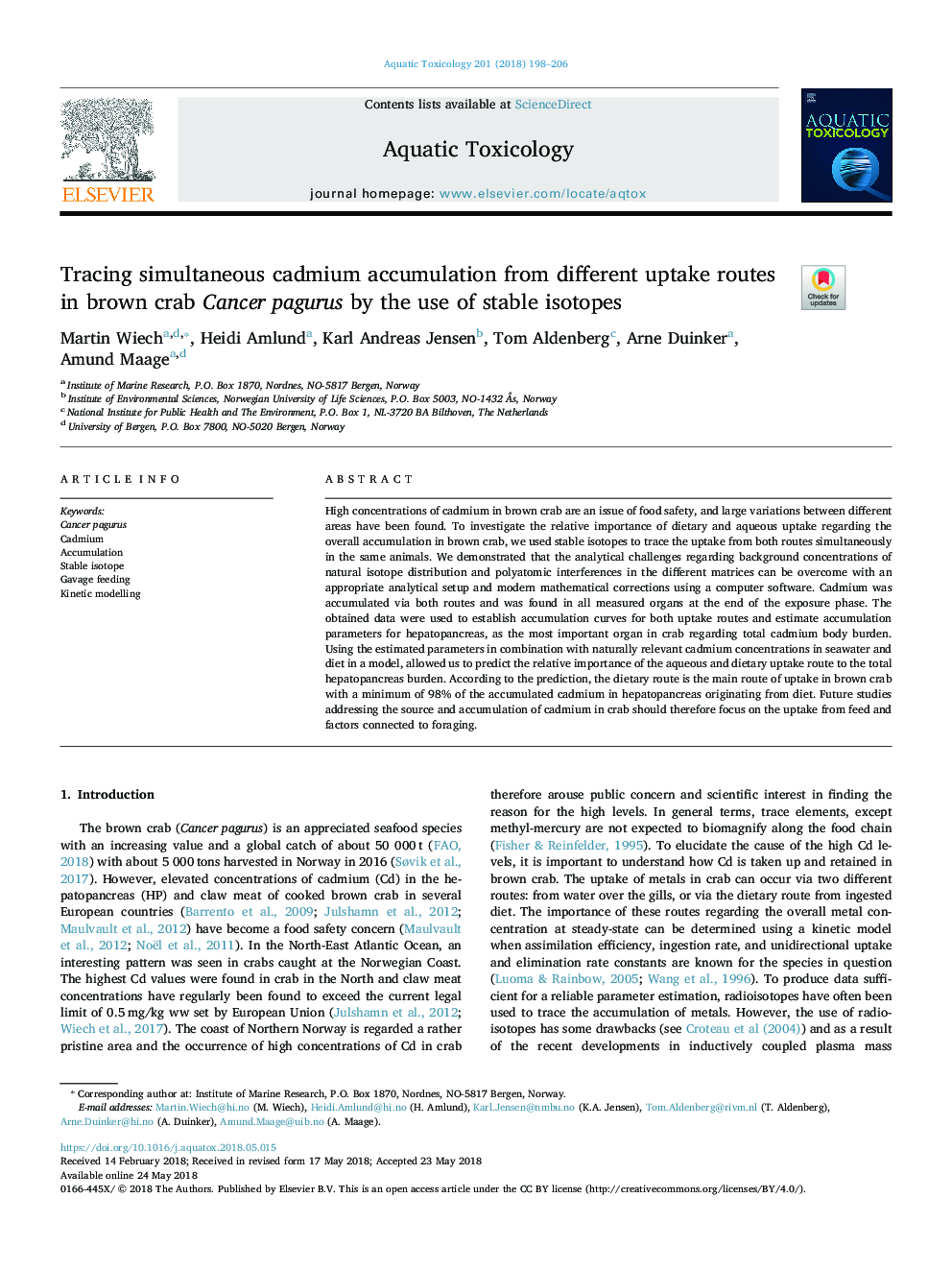| Article ID | Journal | Published Year | Pages | File Type |
|---|---|---|---|---|
| 8883685 | Aquatic Toxicology | 2018 | 9 Pages |
Abstract
High concentrations of cadmium in brown crab are an issue of food safety, and large variations between different areas have been found. To investigate the relative importance of dietary and aqueous uptake regarding the overall accumulation in brown crab, we used stable isotopes to trace the uptake from both routes simultaneously in the same animals. We demonstrated that the analytical challenges regarding background concentrations of natural isotope distribution and polyatomic interferences in the different matrices can be overcome with an appropriate analytical setup and modern mathematical corrections using a computer software. Cadmium was accumulated via both routes and was found in all measured organs at the end of the exposure phase. The obtained data were used to establish accumulation curves for both uptake routes and estimate accumulation parameters for hepatopancreas, as the most important organ in crab regarding total cadmium body burden. Using the estimated parameters in combination with naturally relevant cadmium concentrations in seawater and diet in a model, allowed us to predict the relative importance of the aqueous and dietary uptake route to the total hepatopancreas burden. According to the prediction, the dietary route is the main route of uptake in brown crab with a minimum of 98% of the accumulated cadmium in hepatopancreas originating from diet. Future studies addressing the source and accumulation of cadmium in crab should therefore focus on the uptake from feed and factors connected to foraging.
Related Topics
Life Sciences
Agricultural and Biological Sciences
Aquatic Science
Authors
Martin Wiech, Heidi Amlund, Karl Andreas Jensen, Tom Aldenberg, Arne Duinker, Amund Maage,
